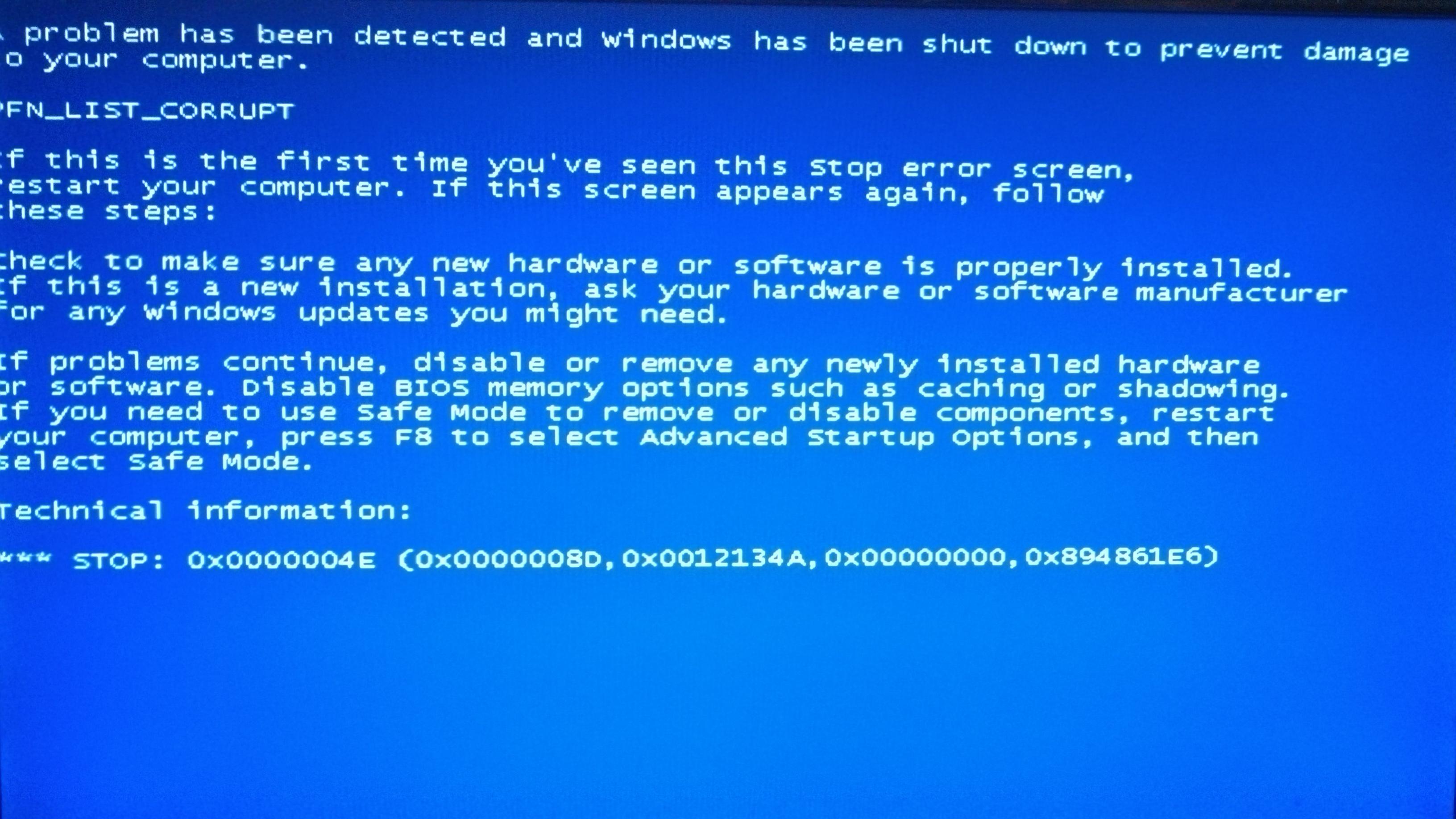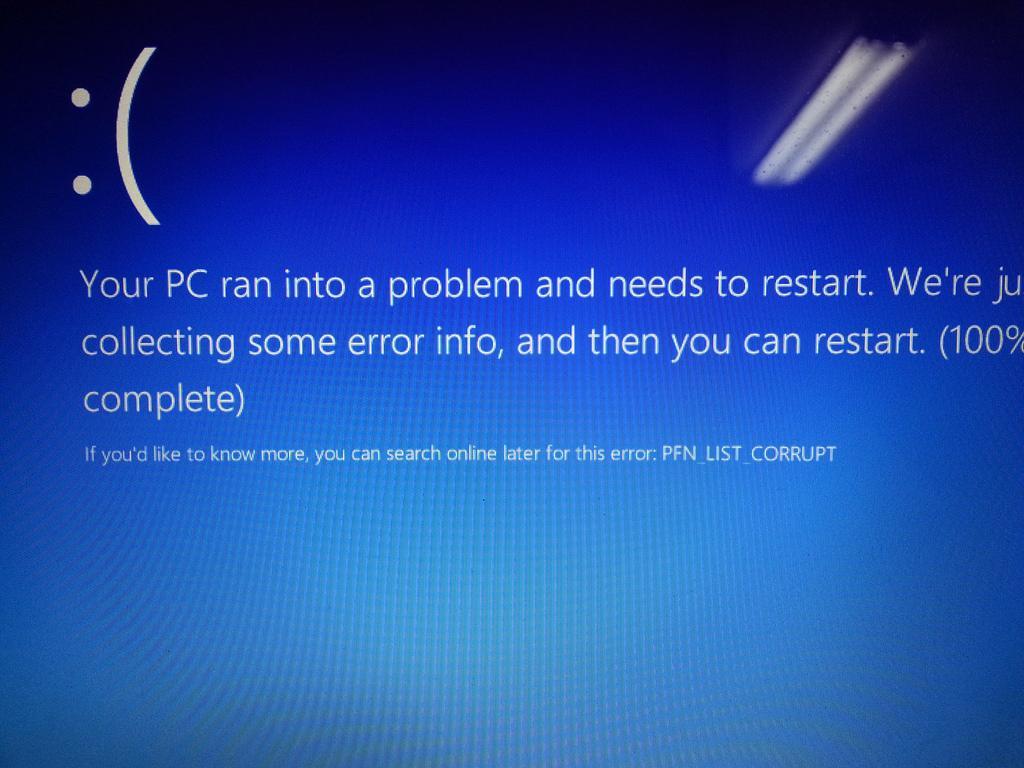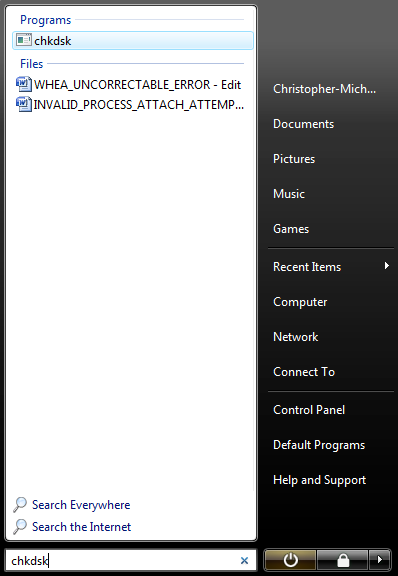-
-
products
-
resources
-
support
-
company
-
A Guide to the PFN_LIST_CORRUPT Blue Screen of Death Error
By Steve Horton September 23, 2013blue screen, Blue Screen of Death, bsod, pfn_list_corrupt17 CommentsError Name: PFN_LIST_CORRUPT
STOP Code: 0x0000004E

A screenshot of this error on Windows 7 and earlier versions of Windows.
A photograph of this error on Windows 8.The PFN_LIST_CORRUPT Blue Screen of Death is caused whenever the page frame number (PFN) list becomes corrupted. The PFN is used by your hard drive to determine the location of each one of your files on the physical disk. A BSOD happens when your computer encounters something it can’t process — corruption of the PFN is one of those things, but fortunately, it’s very fixable.
First off, make sure you’re not using more than one antivirus program at the same time. Using Windows Defender alongside, say, Avira, could cause some serious problems whenever each app tries to access the same thing at the same time.
If that’s not the case, your drivers may be in need of an update, especially if this started when you added a new part or peripheral to your computer. Be sure to update these drivers if possible (Driver Reviver helps with this), or use System Restore to revert your computer to an earlier state.
Besides that, your BIOS may need an update, or you may need to run a diagnostic on your hard drive or your RAM.
For your hard drive, try a disk check — type in chkdsk.exe on your Start Menu or Start Screen and execute it. (Learn more about chkdsk.) Your computer will be restarted and a disk check will run, ridding your hard drive of corrupted or misplaced sectors.

Use the Start Menu in Windows Vista to find chkdsk.For your RAM, run Windows Memory Diagnostic to check your system’s memory for errors:
- Click Start (Windows Key + X in Windows 8 or 8.1)
- Click Control Panel
- Type Memory in the search box and press Enter
- Click Diagnose your Computer’s Memory Problems
- Choose to restart now and perform the test, or run it next time you restart
Finally, sites like MemTest or MemTest86 offer free downloadable memory tests that can be saved to a CD or flash drive and run on your PC.
If you’ve done all of these things and you’re still encountering this error, you may simply have a virus. Try scanning your machine and seeing what comes up — we have a list of recommended antivirus apps. Good luck!
Was this post helpful?YesNoFree Driver Updates
Update your drivers in less than 2 minutes to enjoy better PC performance - Free.
Free Driver Updates
Update your drivers in less than 2 minutes to enjoy better
PC performance - Free.
Didn't find your answer?Ask a question to our community of experts from around the world and receive an answer in no time at all.most relevant recent articles Pin It on Pinterest